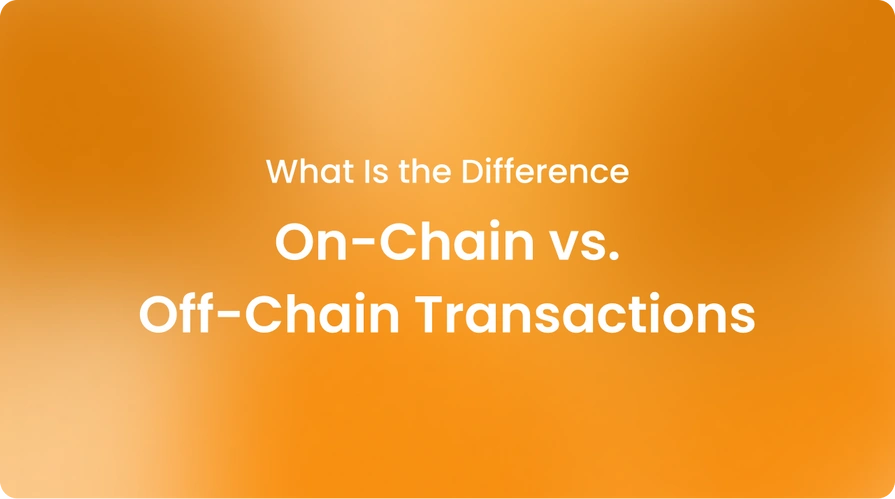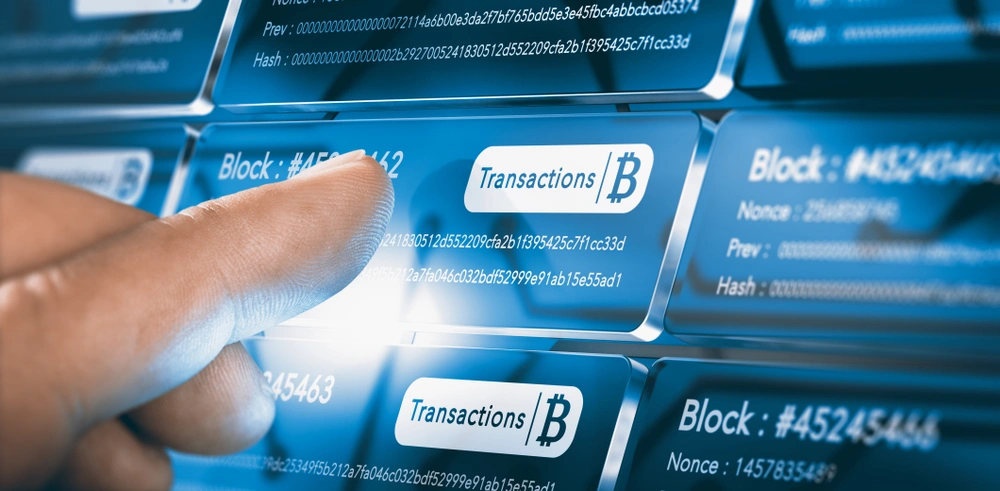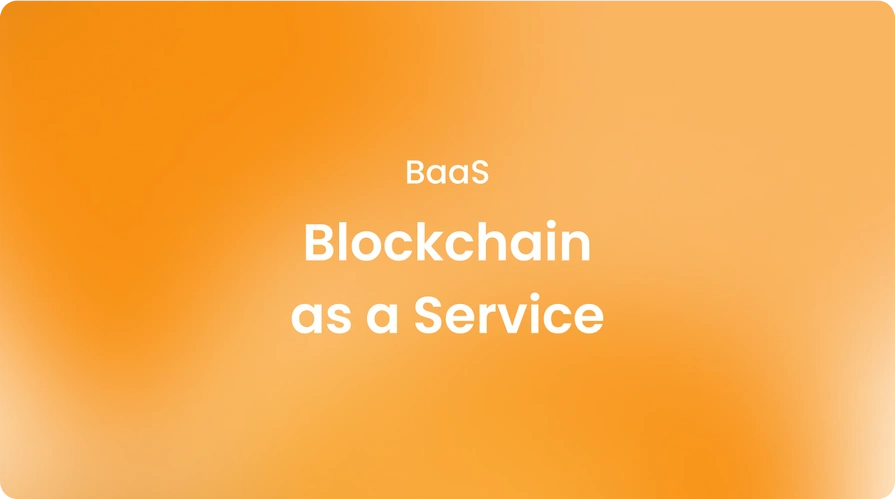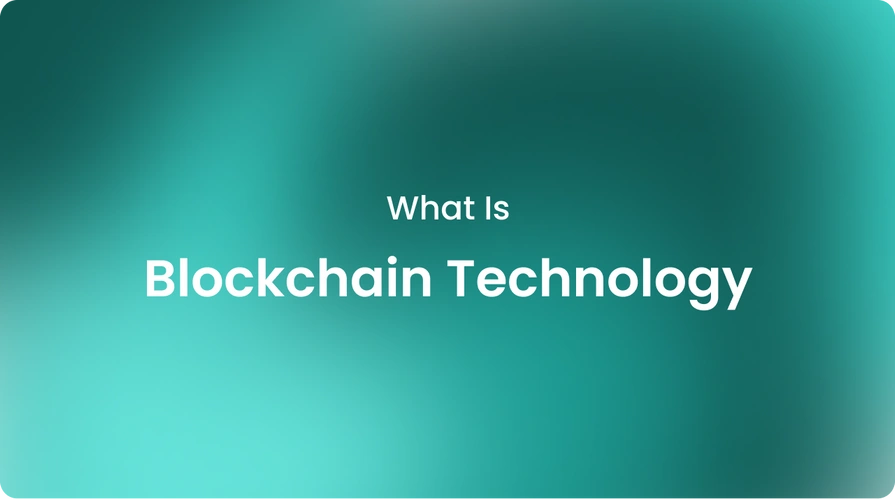|crypto, knowledgehub
On-Chain vs. Off-Chain Transactions: What Is the Difference?

Whether you're a seasoned cryptocurrency investor or just starting to dip your toes into the world of digital assets, understanding the difference between on-chain and off-chain transactions is crucial.
The type of blockchain transaction you choose can impact everything, from fees to processing times, so it pays to know your options. In this article, we'll break down the key distinctions between on-chain and off-chain transactions.
Additionally, we will provide real-world examples of each and discuss which methodology may be better suited for various use cases. By the end, you'll have a solid grasp on this fundamental blockchain concept.
An on-chain transaction records any transfer of data or value on the target blockchain. For instance, participants in the network verify the transaction by logging it directly onto the Bitcoin public ledger when you send Bitcoin from one wallet to another.
Conversely, off-chain transactions occur independently of the main blockchain through separate settlement layers or protocols.
Initially, the details are not published to the parent chain, but they still ultimately impact the balance of the underlying assets. Let's dive deeper into some of the primary distinctions between these approaches!
What are off-chain transactions?
Many individuals and organizations have looked to off-chain in blockchain solutions to address the limitations of the scalability and speed ofon-chain systems. A prominent example is the Lightning Network, built on top of Bitcoin.
It functions by enabling parties to open payment channels that allow unlimited transfers of Bitcoin off the main blockchain. Only when channels close are the final balances published to Bitcoin's ledger.
Other prevalent off-chain transaction methods include state channels that enable more advanced smart contract functionality and centralized services operated by cryptocurrency exchanges that privately record crypto trading instead of on the public network.
Off-chain transactions do not immediately impact the main blockchain public ledger, but they still need to settle on-chain at some point because they are linked to it.
What are the benefits of off-chain transactions?
Off-chain transactions deliver some noteworthy advantages:
Speed
Since validation isn't reliant on network-wide consensus mechanisms, off-chain transactions can often be instantaneous rather than taking minutes or hours to complete.
Cost
There are no miner fees attached, making micropayments and frequent small transfers far more economical.
Privacy
Consenting parties can process off-chain activity confidentially instead of publicly broadcasting transaction data.
Scalability
By reducing the load on the primary chain, off-chain systems allow for far greater transaction throughput overall.
Let’s sum up the benefits of off-chain transactions! Off-chain permits significantly faster, more affordable interactions while also preserving users' financial privacy if desired. For common, low-value tasks, it tends to be vastly preferable to on-chain operations.
What is an example of off-chain?
To understand off-chain transactions in practice, let's consider a real-world case involving the Lightning Network:
Let’s take Caroline from the village in Southeast Asia as an example. 85% of people in her area do not have access to banks or financial services. Ever since Bitcoin arrived in her country a few years ago, Caroline has been using it to support her small shop.
Her company utilizes a mix of on-chain trading of larger assets along with off-chain transaction examples for more frequent smaller exchanges to better optimize costs and processing speeds.
Last month, Caroline decided to integrate Cryptobunq wallets into her shop. Cryptobunq is a crypto-friendly digital bank offering various services for merchants, like Caroline, in crypto and blockchain. Now customers can pay Caroline either in Bitcoin or local fiat through Cryptobunq.
Recently, Caroline's friend started a coffee shop nearby and wanted to accept crypto payments as well. But directly using Bitcoin's blockchain would have been slow and costly for everyday coffee purchases.
So instead, they deployed the Lightning Network to enable brisk transactions with minimal fees between their stores. Now patrons can zip between the shops, paying for snacks and drinks nearly instantly through the off-chain Lightning payment rails.
Their business is thriving, in part because of the ease and speed of crypto, thanks to off-chain approaches and the help of CBQ! Cryptobunq is a one-stop-shop crypto service provider for your crypto needs, from custody and wallet to exchange APIs.
You can easily integrate our expert crypto services into your business, like Coraline and her friend, to benefit your business in the long term.
What are the benefits of on-chain transactions?
While off-chain deals with speed and efficiency improvements, there are many benefits of on-chain transactions too.
Here are the key benefits of on-chain transactions:
Security
Participating nodes collaboratively validate transactions, making them immutable once added to the permanent public record of the chain. You can check out “blockchain nodes” to learn more about them.
Decentralization
Participants spread consensus, ensuring that no single entity controls the network.
Transparency
All transaction details and related data are publicly viewable by any network member through blockchain explorers.
Finality
Once added to the chain, blockchain transactions become irreversible, making rollbacks practically impossible. Users gain confidence that funds won't disappear unexpectedly.
Accountability
Signers must take responsibility for their actions because the blockchain permanently logs everything on-chain, ensuring that their digital footprints endure long-term.
So on-chain transactions are best for situations where permanent validation, full transparency, and the distribution of trust are paramount compared to speed or cost factors. It delivers the tried-and-true guarantees that made blockchains trustworthy in the first place. It is also protected with on-chain KYC.
What is an example of on-chain?
IZEN Products is a multinational manufacturing company based in Europe. They have suppliers spread globally, shipping parts to production sites. To securely process global payments, $IZENProducts started using Bitcoin.
Rather than trusting traditional (and sometimes unreliable) banking wires, $IZENProducts leverages the security of on-chain transactions. Whenever components arrive from overseas vendors, the supplier simply sends a transaction on Bitcoin's network to $IZENProducts' designated crypto wallet.
$IZENProducts can cryptographically verify funds received from anywhere in the world because this activity occurs directly on Bitcoin's public ledger. Immutably recorded on-chain, the details allow for easy auditing of shipping records and related compliance data in case of any questions.
Rather than struggling with fiat currency fluctuations or delays, $IZENProducts streamlines processes through the reliability of blockchain technology for their e-commerce payments.
And they can rest assured that validating nodes diligently back up every on-chain transaction for the permanence and protection of capital flowing between territories.
What is the difference between on-chain and off-chain transactions?
The primary differences between these approaches are:
Speed
Off-chain transactions are typically much faster, while on-chain transactions face network latency.
Cost
Off-chain transactions do not incur miners' fees, but on-chain transactions require payment.
Transparency
On-chain transactions expose all details publicly; off-chain transactions can optionally keep activity private.
Settlement
Off-chain must eventually settle balances on the primary chain for permanence.
Trust model
On-chain relies entirely on decentralized consensus; off-chain depends partly on third-party interfaces until settlement.
While each blockchain transaction method has pros and cons depending on your unique situation, in many cases, a layer two or state channel facilitates using the best of both worlds.
You receive the immediate benefits of off-chain, coupled with the eventual security of on-chain, by ultimately publishing results to the public blockchain.
Which one is more beneficial for your business?
Now that you have a full grasp of the differences between on-chain and off-chain transactions, let's discuss how to determine which may make more sense for your organization:
Do you need extremely fast processing, frequent small transactions, or micropayments as part of your model? Off-chain, via something like the Lightning Network, could be a perfect fit.
Does your application demand the highest levels of validation security where fully decentralized consensus is critical? Sticking to just main-chain, on-chain transactions will provide the gold standard in assurance.
Off-chain makes more sense for lower-value, higher-volume tasks, while on-chain mission-critical or legally sensitive processes usually warrant the added transparency and safeguards.
The right choice partly comes down to your organization's individual needs and risk thresholds. But as blockchains continue to mature with robust layer-two scaling, in many cases, off-chain may be the way to unlock the greatest potential from distributed ledger technology today.
Are you a Cryptobunq customer who wants to accept cryptocurrencies as a payment option? Cryptobunq offers cryptocurrency wallets, crypto custody, blockchain payment solutions, batch payments, and many more, giving you the benefits of both the on-chain and off-chain worlds.
The bottom line: how to strategically apply on-chain and off-chain methodologies
While on-chain delivers immutability and security guaranteed by consensus, off-chain enhances performance through optimized side networks and holds particular appeal for certain business models.
With options like multi-chain layering on two platforms, you need not choose exclusively; taking advantage of both the off-chain and on-chain transaction worlds simultaneously may be the most practical compromise.
Understanding these distinctions unlocks a deeper ability to strategically apply blockchain and seize the fresh opportunities it presents. If you want to further explore and benefit your business with blockchain transactions as well as other expert crypto solutions, you can trust Cryptobunq. Contact us today!













